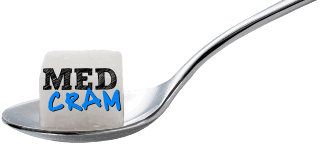In this video, Dr. Seheult of MedCram discusses a recent video he had made on a randomized control study on a LED device that was used to treat patients with COVID-19 in the hospital. A LED vest with a 940nm wavelength was utilized. It contained about 300 individual infrared lights with a total optical power of 6 watts.The vest size was 36 cm x 58 cm. It was used for 15 minutes a day, 7 days in a row along with conventional therapy for COVID-19. For the controls, the jacket was placed on the person but was not turned on. The study size was small at 30 people; however, it still showed statistical significance. The design was to take non-intubated patients between ages 50-80, with a BMI of less than 30 kg/m, that had been diagnosed with COVID-19 by PCR. They were divided into two groups, the intervention and control. Comparison of the two groups showed no significant statistical differences except that the pneumonia severity index was worse in the intervention group compared to the control group but otherwise there appears to have been good randomization. They found that LED photobiomodulation enhances the effect of conventional therapy on COVID-19 patients providing statistically significant improvement in partial oxygen saturation, tidal volume, respiratory rate, heart rate, systolic blood pressures, maximum inspiratory pressure and maximum inspiratory pressure. There were no reported effects or complications associated with LED therapy observed during treatments and no patients died. The results of this study were promising but further research is needed. The main limitation of this study was the size of the cohort.
Questions that were posed from this study included:
Where can I buy this jacket?
The researchers in this study built this jacket so it is not available for purchase. This is not the same as red light therapy in addition.
Why can’t I just take melatonin?
The melatonin produced by this jacket is not utilized the same as melatonin that is absorbed when ingesting it. This melatonin is what is made in the mitochondria directly in the cell where the reactive oxygen species are created. Melatonin is also a potent stimulator of the circadian rhythm. Taking it at other times than prior to going to bed can confuse your circadian rhythm and you do not want to do this. Normal doses of melatonin include 1-3 mg. If you take more than that it may cause paradoxical issues with not being able to sleep or feeling irritated. The melatonin in the mitochondria does not get out of the cell and doesn’t affect your circadian rhythm. Also melatonin is not a regulated substance here in the U.S. If taking melatonin make sure it is third party tested.
Is getting out into the sun the same?
Yes, when you go out into the sun you are getting the “whole” package with UV, visible and infrared light. You are getting the 940 nm wavelength and everything else with it. We don’t know at this time if 940 nm is the optimal wavelength.
What about those of us that live where it is dark a lot of the time?
Near infrared radiation can still penetrate fairly well. You can try to build solariums or greenhouses that do not reduce near infrared radiation from the sun. You can also build a fire which also gives off some infrared radiation.
Does it matter that it is at 940 nm?
This is the wavelength that was chosen by the researchers and Dr. Seheult is not clear why this particular wavelength was chosen. If you get out into the sun you will not only get this wavelength but many others. More research is needed to determine the “optimal” wavelength.
MedCram encourages everyone to get outdoors as much as possible as we are just starting to learn how beneficial that may be to our health.
LINKS / REFERENCES:
Cardiopulmonary and hematological effects of infrared LED photobiomodulation in the treatment of SARS-COV2 (Journal of Photochemistry and Photobiology) | https://www.sciencedirect.com/science…
Associations of Outdoor Temperature, Bright Sunlight, and Cardiometabolic Traits in Two European Population-Based Cohorts (Journal of Clinical Endocrinology and Metabolism) | https://pubmed.ncbi.nlm.nih.gov/30759…
All coronavirus updates are at MedCram.com (including more discussion on delta variant covid, COVID Delta, COVID children, natural immunity COVID 19, and more).
MedCram Update 46: https://youtu.be/EFRwnhfWXxo
MedCram Update 47: https://youtu.be/H1LHgyfPPQ8
MedCram Update 132: https://youtu.be/9OZZ6_M4OB0
